I had a circuit on PCB. I used solder with acid-core to solder it. This combined with my mess soldering caused various shorts between components.
One of those components was MOSFET transistor BUZ11 which due to shorts heated up to the point of slight discoloring of radiator and giving a little smoke before I shut off the power.
I wonder what could cause this heat up. Current that was fed through circuit was about 2A. Well within range of this component. Voltage was 15V. There were no oscilators, no inductors, just two capacitors.

So the question is: How to heat up MOSFET transistor without passing through it (drain-source) more current than it can handle or applying higher voltage than it can handle.